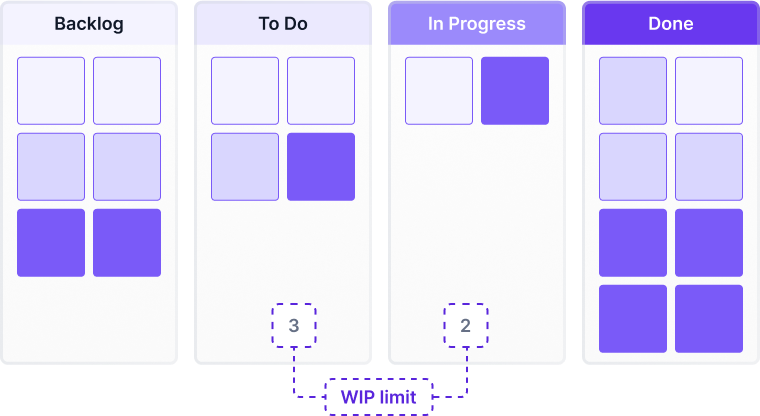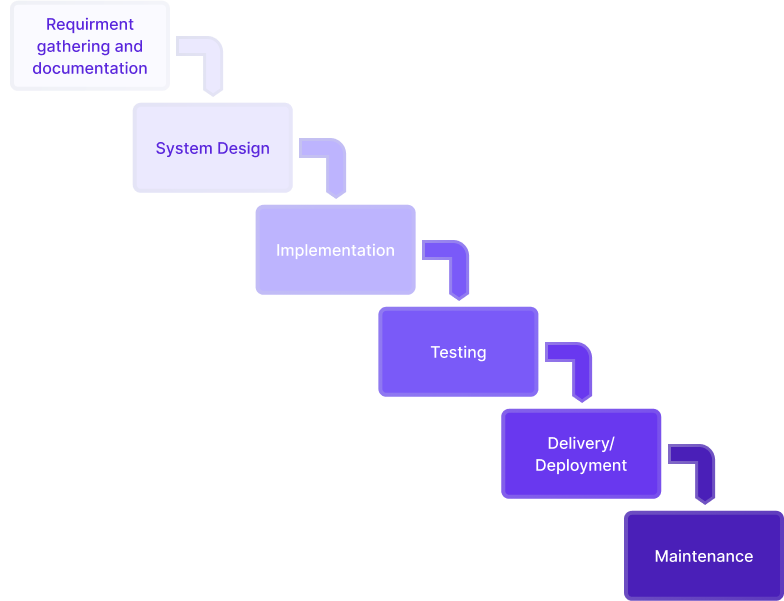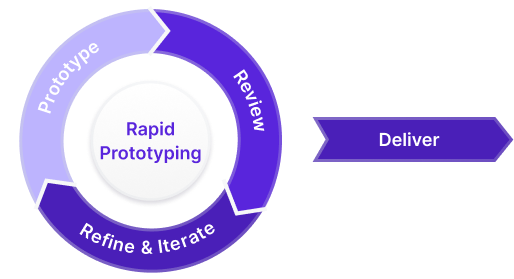Staff Augmentation
At Glatco, we understand that every project is unique, and choosing the right methodology is crucial for delivering high-quality software solutions efficiently. Whether it is using your existing methodology or a new methodology that we recommend based on your project requirements, we will work to ensure that your project is effectively managed and meets your expectations.
Agile
Agile is a flexible and iterative approach that prioritizes customer collaboration and responding to change. It divides the project into small, manageable increments called sprints, allowing for continuous feedback and improvement. This methodology is ideal for projects with evolving requirements, as it promotes adaptability and regular delivery of valuable features.

Key Features:
Iterative development with frequent releases
Emphasis on customer feedback and collaboration
Flexibility to adapt to changing requirements
Continuous improvement through regular reviews
Scrum
Scrum is a popular framework within Agile that focuses on delivering high-quality software through short, time-boxed iterations known as sprints. It organizes work into manageable units and emphasizes team collaboration, accountability, and transparency. Scrum is particularly effective for complex projects where requirements may evolve.

Key Features:
Time-boxed sprints (typically 2-4 weeks)
Defined roles: Product Owner, Scrum Master, and Development Team
Regular ceremonies: Sprint Planning, Daily Stand-ups, Sprint Review, and Sprint Retrospective
Emphasis on teamwork, accountability, and continuous improvement
Kanban
Kanban is a visual methodology that focuses on managing and improving work processes by visualizing tasks and workflows. It uses a Kanban board to represent work items and their progress through various stages. This method is effective for optimizing efficiency, reducing cycle times, and managing ongoing work with varying priorities.

Key Features:
Visual representation of work using a Kanban board
Focus on continuous delivery and flow optimization
Flexibility to adjust priorities and workload as needed
Emphasis on limiting work in progress (WIP) to enhance focus and efficiency
Waterfall
The Waterfall methodology is a traditional, linear approach where each phase of the project must be completed before moving on to the next. This method is structured and straightforward, making it suitable for projects with well-defined requirements and minimal expected changes.

Key Features:
Sequential phase-based approach: Requirements, Design, Implementation, Testing, Deployment, and Maintenance
Clear documentation and project milestones
Suitable for projects with stable and clear requirements
Predictable timelines and budgets
DevOps
DevOps is a set of practices that integrates development and operations teams to improve collaboration, automate processes, and accelerate the delivery of high-quality software. By fostering a culture of continuous integration, continuous delivery, and continuous monitoring, DevOps aims to streamline workflows, enhance efficiency, and deliver value faster.

Key Features:
Continuous Integration (CI) and Continuous Delivery (CD) for frequent and reliable releases
Automation of testing, deployment, and infrastructure management
Emphasis on collaboration and communication between development and operations teams
Continuous monitoring and feedback to ensure quality and performance
Rapid Prototyping
Rapid Prototyping is an iterative approach to software development that focuses on quickly creating a working model of the product. This methodology allows for early testing and feedback, enabling teams to refine and improve the product based on user input before final development. It is particularly useful for exploring new ideas and reducing the risk of building the wrong solution.

Key Features:
Quick creation of working prototypes
Early user testing and feedback
Iterative refinement of the product
Reduces risk by validating ideas early in the development process
Hybrid Approaches
In many cases, a hybrid approach combining elements from different methodologies can provide the best results. By tailoring our approach to your specific needs, we ensure that we leverage the strengths of each methodology to achieve optimal outcomes.

Key Features:
Customized approach based on project requirements and goals
Combination of methodologies to balance flexibility and structure
Focus on delivering high-quality solutions efficiently
Adaptability to project changes and evolving requirements
